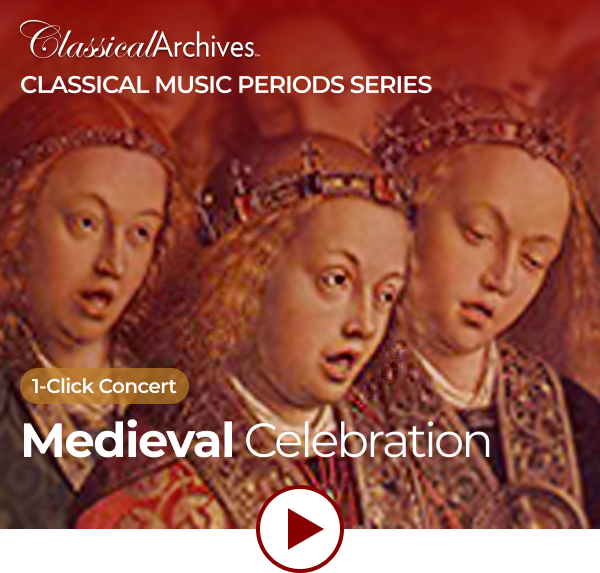 Introduction Introduction
The music of the Middle Ages (c.600-1420) reveals the very origins of Western musical thought and practice, and offers the modern listener a rich and tremendous diversity of styles, techniques, and aesthetic approaches. From the ecclesiastical roots of Gregorian chant to the chivalric expressions of the Troubadours and Trouvères to the earliest experiments in polyphony to the first master composers of the Western canon: Pérotin, Philippe de Vitry, Guillaume de Machaut, and Francesco Landini. This “Medieval Celebration” is the first in our series of features devoted to the nine principal periods of music history, whereby we invite our visitors – regardless of experience – to explore and discover the many composers and works that exalt the era, and some of the outstanding artists that successfully bring it to our modern ears. Specifically, this Feature includes a brief written Overview of the Medieval era, as well as a useful index of key composers, works, and artists – each of which is linked to the related page on our site. In addition, we provide a two-hour 1-Click Concert (full streams to our subscribers only), and a featured “sampler” album. Enjoy!
"Music is an art which likes people to laugh and sing and dance. It cares nothing for melancholy, nor for a man who sorrows over what is of no importance, but ignores, instead, such folk."
– Guillaume de Machaut
 Overview Overview
The Medieval Period, or Middle Ages (from the Latin medium aevum), is a commonly used expression referring to the vast period between the fall of the Roman Empire (c.476) and the beginning of the Renaissance in the early 15th century. It is perhaps the most misunderstood era of European history among the general public, partly due to the widely used term "Dark Ages" to which it is often equated. While it is true that many aspects of classical education and civic society were lost or compromised in the chaotic years following the fall of Rome, the era as a whole witnessed dramatic achievements in politics, science, and the arts that continue to shape our world today. As urban society crumbled, learning and unity were initially fostered by the Church, and indeed the Early Middle Ages (6th-11th c.) is appropriately called the Age of Faith. The dominant musical impulse, therefore, was to compose music that complimented the rituals of the Catholic Church, giving rise to a huge body of Gregorian chant – monophonic (single-voiced) settings of liturgical and related texts associated with Christian worship; these years also saw the gradual creation of a system of musical notation, whereby this huge repertoire could be widely disseminated.
The advent of vocal polyphony (two or more voices in counterpoint) arose only in the so-called High Middle Ages (12th-13th c.), and is particularly associated with the great Cathedral of Notre Dame in Paris. The music composed at Notre Dame, by such early masters as Léonin and Pérotin, included organum, conductus, and the motet, which soon became the dominant genre of the era. By the early 13th century, secular texts, particularly those associated with Courtly Love, began to stand aside purely religious ones - both in polyphony and in the monophonic songs of the Troubadours and Trouvères Instrumental or dance music, too, increased in popularity at this time, though maintained a decidedly secondary status compared to vocal music. The Late Middle Ages (14th c.) saw the rise of the first towering figures of Western music, most especially Guillaume de Machaut, who composed elaborate religious motets, secular chansons, and the first setting of a polyphonic Mass - the Messe de Nostre Dame. As the 14th c. came to a close, however, the complexities of Late Medieval polyphony (e.g., the so-called "ars subtilior") began to stimulate a reactive move toward a more simplified approach - and the dawn of a new era, the Renaissance.
Learn More
|



